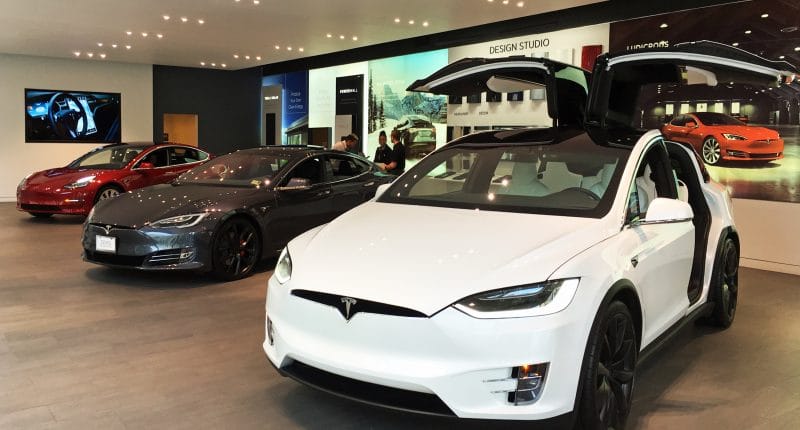Luxury electric car-maker Tesla Inc. has revealed its revenue for the second quarter on Monday, and it’s a major win for the company, as well as CEO Elon Musk (who recently said that his firm is the reason behind a great percentage of his life’s pains), as earnings stood at $1.14 billion, after having crossed the $1 billion mark for the first time. One may note that revenues this time around are tenfold higher than what the industry giant earned back during Q2 last year, which stood at $104 million.
Prior to this announcement, Tesla had also reported having delivered around 201,250 electric vehicles in the second quarter alone, while producing 206,421 total vehicles. The newly released figures came out greater than those expected by Wall Street, mainly fuelled by an increased sale of the company’s less expensive models (especially since the prices of most models were raised).
Additionally, revenue worth $801 million came in through the group’s investments in its clean energy business, which, in recent times, have spanned solar photovoltaics as well as energy storage units for homes, businesses, and even utilities. The figures are up 60% as compared to the previous quarter. Still, the next quarter might see a dip in the revenues arising from this particular sector, as Musk has said that the company is expecting to develop only around 30,000 to 35,000 energy storage units in Q3, thanks to the global chip shortage.
Meanwhile, $951 million came in through services and other revenues, with Tesla now having 598 operational stores and service centers, along with a mobile service fleet spanning some 1,091 vehicles. However, the year-on-year increase was just 34%, down from the 121% from the year before.
It wasn’t all rosy and profits however, as around $23 million went into “Resconstructing and other” operating expenses due to the volatility of the firm’s Bitcoin holdings. Tesla’s cash position, too, slipped around 5% from the previous quarter, standing at $16.23 billion, mainly due to “net debt and finance lease repayments of $1.6B, partially offset by free cash flow of $619M.” Amounts owed to suppliers rose to $7.56 billion, an increase of 13.7% from Q1 2021.
This comes even as Tesla, among many other automakers, suffered a hit in terms of productions owing to the persistent chip shortage, along with limited availability of battery cells, among other parts. This has resulted in the Elon Musk-led firm delaying the release of its Semi truck until 2022. The reason for the push-back has also been attributed to Tesla’s plans to set up factories.
The Semi truck model was first unveiled in November 2017, and this January, Musk had said that the engineering work had been completed. At the same time, he had warned that lesser supply of battery cells could affect the firm’s plans for a 2021 launch.
Meanwhile, no heads-up has been put forward regarding the launch of Cybertruck. Still, the statement issued by Tesla says that the model is currently expected to go into production at Austin after Model Y. The company also stands with its expectations to grow deliveries by over 50%, mainly by expanding volume production growth. Suggestions have arisen calling for Musk and company to set up their own chip facility, but the CEO says that it would take them at least 12-18 months, even “moving like lightning.”
Additionally, product recalls in China and the US, as well as flying roofs and general consumer dissatisfaction in China, also contributed to an increase in expenses.
The Tech Portal is published by Blue Box Media Private Limited. Our investors have no influence over our reporting. Read our full Ownership and Funding Disclosure →






